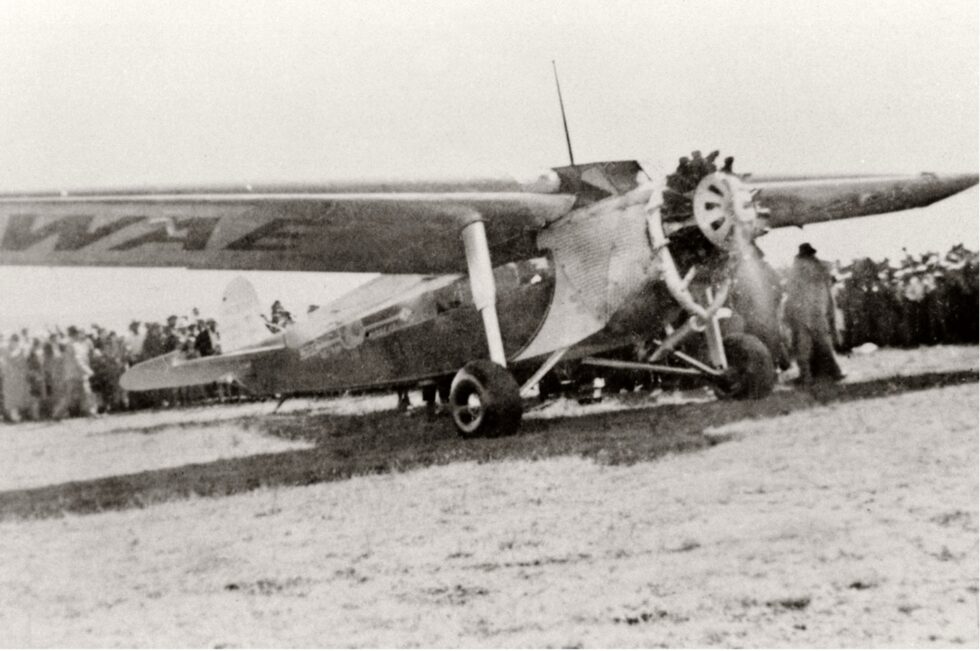Western Air Express Fokker Model 8 Super Universal

MODEL BY:
TWA
Model Scale:
1/60
MODEL ADDED:
08/30/1966
historical significance
First Albuquerque Visit: 1931
Additional Information:
The Fokker Super Universal was an airliner produced in the late 1920s by Fokker America in the United States. The Super Universal, also called the Model 8, was an enlarged and improved version of the Fokker Universal and it came with cantilever wings and an enclosed cockpit. The Super Universal was first used on the Byrd Antarctic expedition and was one of the most produced aircraft of the Fokker America models. The Super Universal was a conventional, high-wing cantilever monoplane with a fully enclosed flight deck and cabin and a fixed undercarriage. Improvements over its forerunner included an enclosed cockpit and a new wing that eliminated the requirement for struts, bringing it in line with the rest of Fokker’s designs.
The Fokker Super Universal fell victim when another Fokker design, the Fokker F-10, crashed near Bazaar, Kansas on March 31, 1931, with Knute Rockne, the well-known Notre Dame Football coach on board while heading to participate in the production of the film “The Spirit of Notre Dame”. Both the pilots and all six of the passengers were killed in the crash. A thorough and well-publicized investigation concluded that the Fokker, operated by a the newly-formed Transcontinental and Western Air (TWA), broke up in the air due to fatigue cracks in its famous cantilevered stressed plywood wing joined one of the engine mounting struts.
The entire Fokker Super Universal fleet was grounded and inspected after similar cracks were found in many examples. This failure resulted in a complete overhaul of standards for new transport aircraft and drove to the incorporation of all-metal construction in commercial aircraft beginning with the Boeing 247 and Douglas DC-2.
Western Air Express (WAE) was based in Los Angeles, California and began operations on May 23, 1926 with an initial route from Los Angeles to Salt Lake City carrying U.S. mail and occasional passengers. On May 15, 1929, the carrier began the first scheduled passenger airline service to New Mexico with a route from Los Angeles to Albuquerque that made stops at Kingman and Holbrook, Arizona using a Fokker F-10 tri-motor. Two weeks later on June 1, 1929, the route was extended eastward from Albuquerque to Kansas City with stops at Amarillo and Wichita. WAE operated many other aircraft types during its service within New Mexico including the Fokker F-7, F-14, F-32, F-Super Universal, Douglas M2, Lockheed 5A Vega, and Clark GA-43. Some of these aircraft however were only used to transport mail which was the primary focus for airline operations during that time. A ticket office was opened in downtown Albuquerque at the Hotel Franciscan. The Western Air Express name was changed to Western Air Lines in 1941 and the carrier nearly merged with Continental Airlines in 1978.
Western Air Express returned to Albuquerque in 1931 providing mail and occasional passenger service on a north-south route between Cheyenne, Wyoming and El Paso, Texas using the Super Universal. The route had previously been flown by Mid-Continent Air Express and some aircraft had been purchased from that carrier in October of 1931. Registration numbers of aircraft that landed in Albuquerque include NC-121, NC-126M, NC-99K, NC-8011, NC-122 and NC123-M. The first photo was taken at Oxnard Field.
GALLERY:
SEARCH OUR DATABASE:







